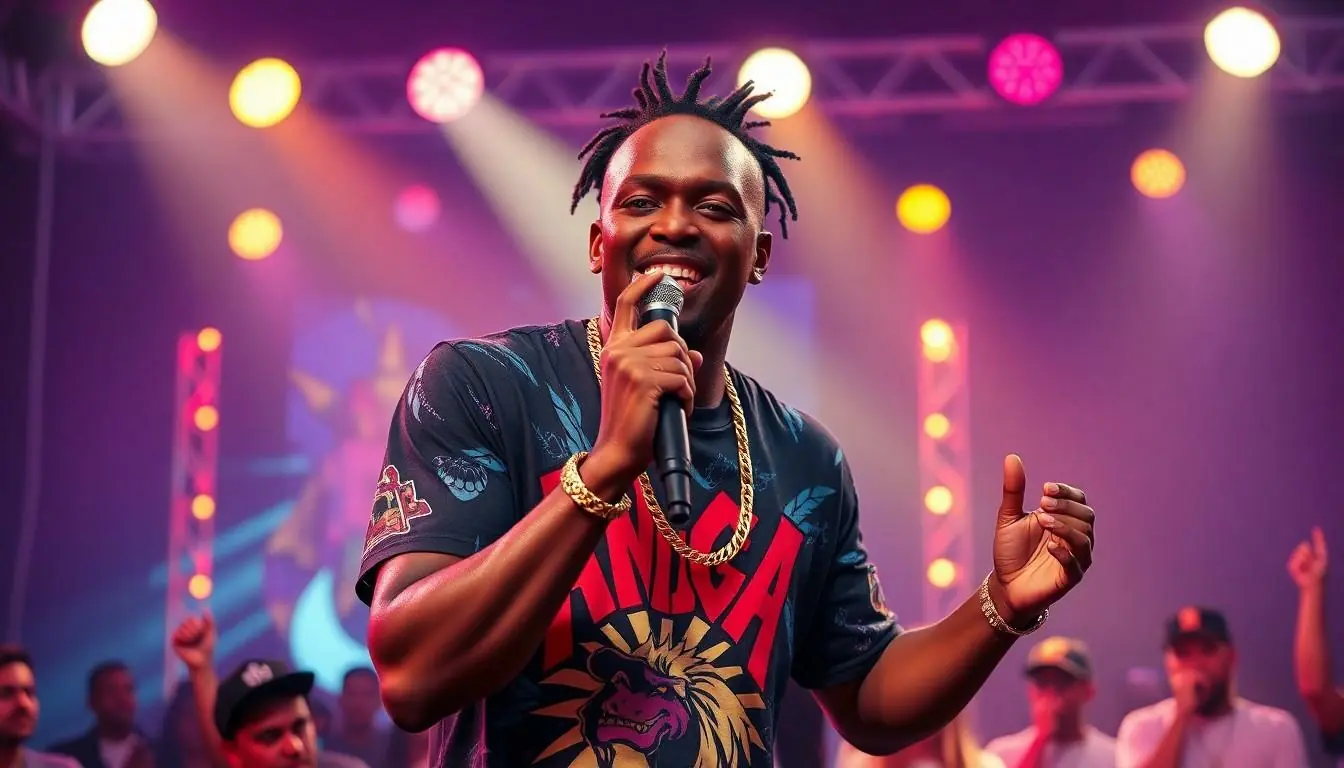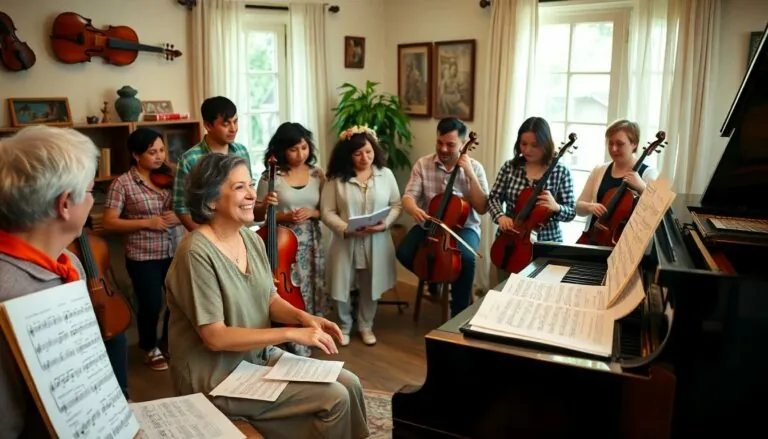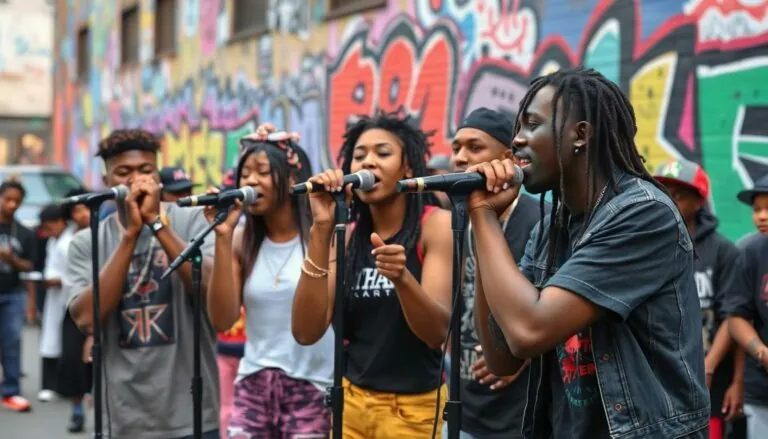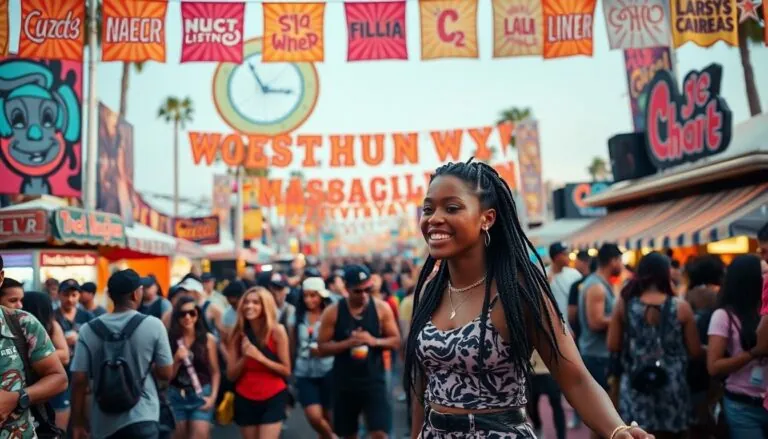Table of Contents
ToggleHip hop rym isn’t just a style; it’s a cultural phenomenon that’s got everyone nodding their heads and tapping their feet. From the streets to the stage, this genre has transformed the way people express themselves, telling stories that resonate with millions. If you think hip hop is just about catchy beats and slick moves, think again. It’s a lyrical playground where wordplay reigns supreme and creativity knows no bounds.
Overview of Hip Hop Rym
Hip hop rym integrates rhythm and poetry, serving as a vital element in the broader hip hop culture. Many artists utilize clever wordplay, metaphors, and social commentary within their lyrics. Storytelling remains at the forefront, reflecting personal experiences, struggles, and aspirations.
Lyricism defines hip hop rym, allowing artists to express emotions and convey messages. The intricacy of rhyme schemes varies, with some opting for simple patterns while others employ complex structures. Rhyme types enhance the lyrical depth, from internal rhymes to multisyllabic forms, creating a rich auditory experience.
Collaboration among artists often enriches the genre. By partnering, they blend styles and ideas, resulting in innovative sounds. Events and battles showcase these talents, offering platforms for emerging voices. Such gatherings foster community and inspire creativity among performers and audiences alike.
Cultural roots play a significant role in the evolution of hip hop rym. Influences from spoken word traditions, blues, and jazz contribute to its unique sound. As hip hop rym evolves, it continually adapts to societal issues, making it relevant across generations.
Overall, hip hop rym stands as an essential art form. It transcends simple entertainment, offering critical commentary on social concepts and individual realities. Artists wield their words to provoke thought and inspire action, reinforcing hip hop’s role as a transformative societal force.
History and Evolution
Hip hop rym has evolved significantly, illustrating the genre’s rich history and cultural depth. This section examines its origins and highlights key artists and albums that shaped its trajectory.
Origins of Hip Hop Rym
Hip hop rym traces back to the 1970s in the Bronx, New York City. DJs began isolating breaks from funk and disco tracks, laying the groundwork for MCs to speak rhythmically over beats. This practice merged spoken word poetry with vibrant rhythms, creating a unique art form. Influences from jazz, blues, and African American oral traditions contributed to its development, enriching the lyrical content and delivering social messages. As a result, hip hop rym became a powerful vehicle for storytelling, addressing societal issues and personal experiences.
Influential Artists and Albums
Prominent artists and landmark albums have played a pivotal role in shaping hip hop rym. Grandmaster Flash and the Furious Five’s “The Message” pioneered narrative-driven lyrics, introducing social commentary to the genre. Following them, artists like Nas and his album “Illmatic” showcased intricate lyricism and storytelling, elevating the art form. Eminem’s “The Slim Shady LP” further expanded the genre’s reach, highlighting diverse perspectives and personal struggles. These artists, among many others, have pushed boundaries and influenced countless performers, creating a rich tapestry of sound and message within hip hop rym.
Key Characteristics
Hip hop rym encompasses various elements that define its unique essence within the culture. It merges creativity, storytelling, and social commentary, reflecting the experiences of diverse communities.
Lyrical Themes
Lyrical themes in hip hop rym often explore social issues, personal struggles, and cultural identity. Artists frequently delve into topics such as inequality, resilience, and hope. Social commentary is prevalent, with many songs addressing systemic injustices and personal experiences. The use of metaphor and vivid imagery enhances storytelling, allowing listeners to connect deeply to the messages. Throughout the genre, expressions of empowerment and aspiration inspire listeners, showcasing the transformative power of hip hop rym.
Musical Styles
Musical styles in hip hop rym vary widely, integrating elements from numerous genres. Beats from funk, jazz, and soul create rich soundscapes, providing an energetic backdrop for lyricism. Producers often experiment with samples, loops, and electronic sounds, fostering innovation. The incorporation of live instrumentation also adds depth, exemplifying artistry beyond traditional production. Variations in tempo and rhythm create distinct sub-genres, allowing artists to showcase their individuality. Overall, the fusion of different musical styles contributes to hip hop rym’s diverse appeal.
Impact on Culture
Hip hop significantly shapes culture through its expressive power and communal connections. Artists often use their platforms to address pressing social issues and inspire change.
Social and Political Influence
Hip hop serves as a voice for marginalized communities. Lyrics frequently tackle themes like inequality, racism, and social justice, reflecting lived experiences. For example, tracks such as “Fight the Power” by Public Enemy energize movements and galvanize activism. Additionally, hip hop artists like Kendrick Lamar and J. Cole raise awareness of systemic injustices through their storytelling. Engagement in political discourse showcases hip hop as suitable for societal transformation.
Global Reach and Adaptation
Hip hop transcends borders, resonating across continents. Countries around the world adapt the genre to reflect local cultures and social issues. In France, artists like IAM incorporate language and themes relevant to their experiences. Similarly, in South Korea, the rise of K-hip hop blends traditional sounds with contemporary styles. These adaptations maintain hip hop’s essence while celebrating diverse cultural identities. Global collaborations further enrich the genre, showcasing its unifying force and creative versatility.
Hip hop rym stands as a powerful testament to the genre’s ability to blend artistry with social commentary. Its roots in rhythm and poetry allow for a rich exploration of personal and collective experiences. Through clever wordplay and vivid imagery, artists create connections that resonate deeply with listeners.
As hip hop continues to evolve, its global impact remains undeniable. The genre fosters community and inspires change, giving voice to marginalized communities while addressing pressing social issues. With its diverse musical styles and innovative collaborations, hip hop rym not only entertains but also challenges societal norms and encourages empowerment. The future of hip hop rym promises to be as dynamic and influential as its past, ensuring its place as a vital cultural force.






